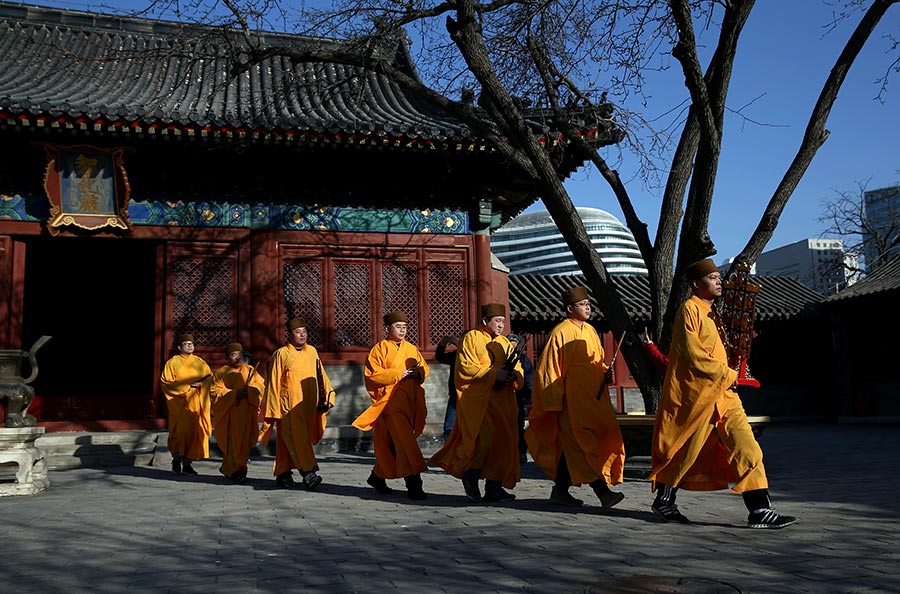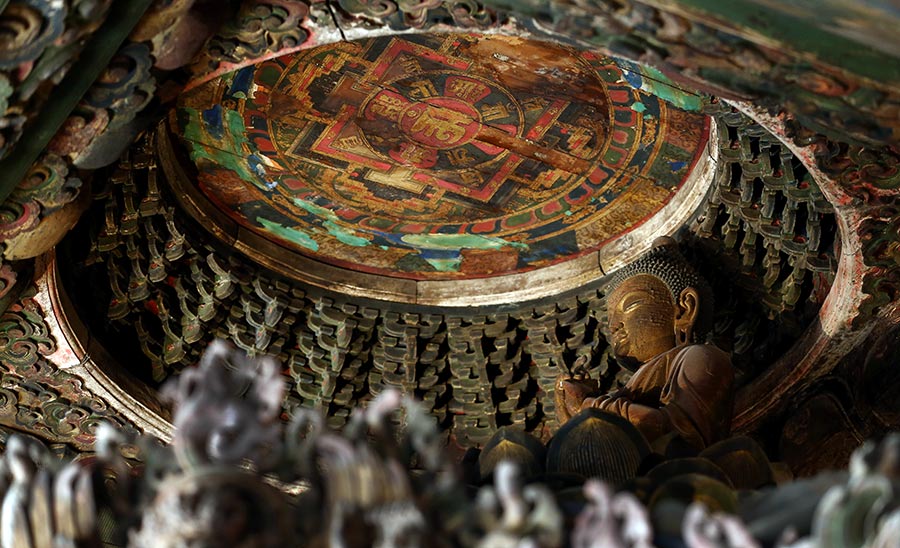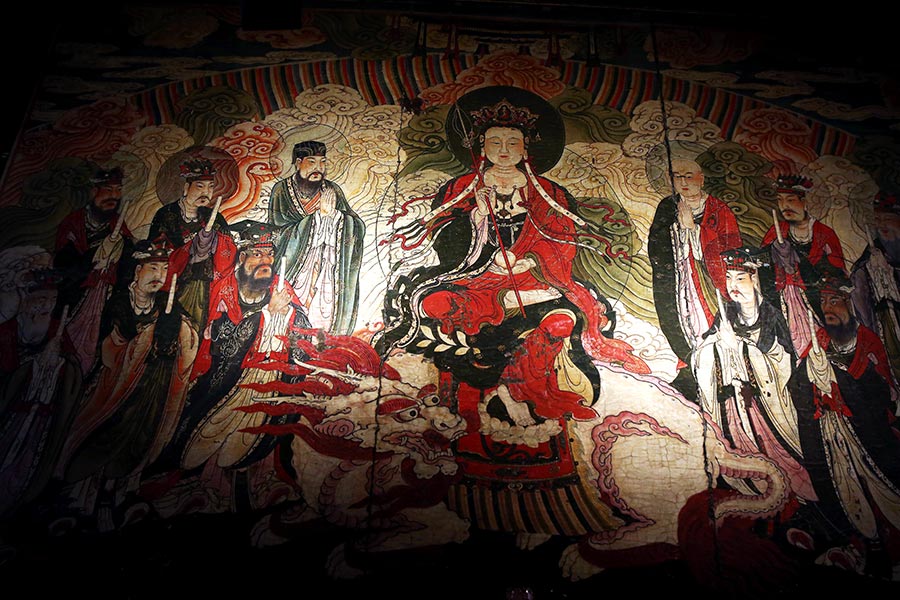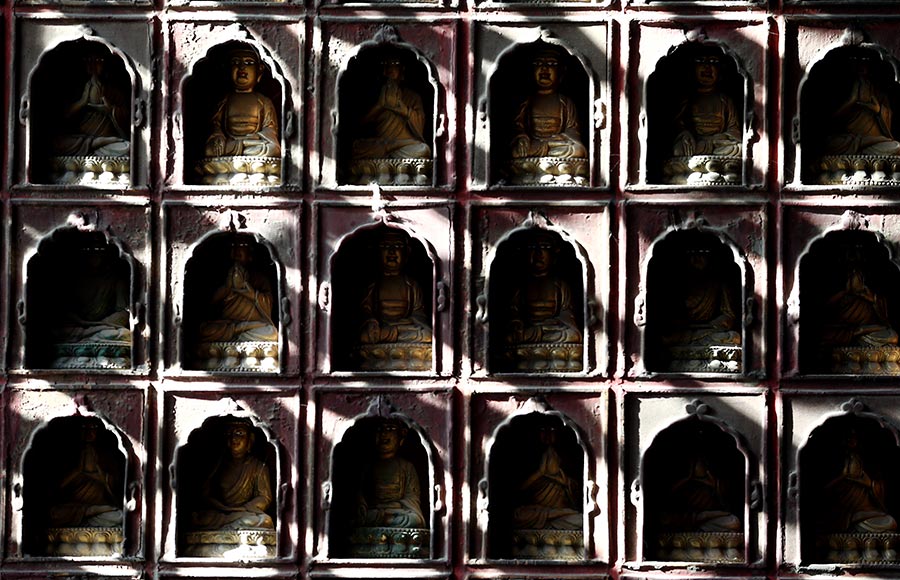 |
|
The renovated Zhihua Temple is open to the public. Its highlights include performances of Buddhist music and the display of statues. [Photo by Zou Hong/China Daily] |
Next to the busy markets and office buildings of Beijing's Chaoyangmen district, there is a place of tranquility, with a history dating back more than half a millennium, which can almost be overlooked amid the hectic pace of life in the city's downtown.
Zhihua Temple reopened on Jan 19 following a six-month hiatus that saw one of the capital's key cultural landmarks revitalized in a bid to better display the ancient building and its treasures.
"The biggest highlight of the temple is now the ancient architecture itself," says Yang Zhiguo, deputy director of the administration office for the Zhihua Temple.
According to Yang, the temple is one of the best preserved Ming Dynasty (1368-1644) architectural complexes in Beijing.
Zhihua Temple, which has also been known as the Beijing Museum for Cultural Heritage Exchanges since 1992, was mainly used as a place to offer general information about the development of museums in Beijing, but seemed to neglect its own cultural treasures: Many parts of the temple were closed to the public while accessible areas remained dark and dingy.
 |
|
The renovated Zhihua Temple is open to the public. Its highlights include performances of Buddhist music and the display of statues. [Photo by Zou Hong/China Daily] |
But now, the ceilings of the temple's halls - full of delicate and sparkling Buddhist paintings, statues and sculptures - have all been illuminated using lights that don't use ultraviolet rays to avoid damaging the cultural relics.
"The artifacts that were once invisible are now accessible," Yang says.
"This will help prolong the amount of time visitors spend here reviewing the history of the temple."
Following the renovations and the temple's reopening, he expects the institution to operate more like a museum, which is better designed to tell the stories of the cultural relics it contains.
When its construction was completed in 1444, Zhihua Temple was originally used as the family temple for Wang Zhen, a powerful and notorious eunuch favored by Emperor Zhengtong.
A plaque with the emperor's handwritten script was hung above the front gate of the temple as a token of imperial protection.
 |
|
The renovated Zhihua Temple is open to the public. [Photo by Zou Hong/China Daily] |
Wang was killed five years later during the Tumu Crisis, where Imperial Ming forces suffered a huge military defeat at the hands of the Mongols. Wang was generally considered to be responsible for the crisis. All of his other properties were confiscated but the temple survived, thanks to the presence of the plaque.
During its peak, Zhihua Temple covered an area as large as 20,000 square meters, but only some 10,000 square meters of grounds remain to date.
Yang explains that the temple has typical characteristics of royal temples from the early Ming Dynasty. Its style and layout also demonstrate the transition from the Song (960-1279) and Yuan (1271-1368) dynasties to the Qing Dynasty (1644-1911), and thus offers a crucial reference point in the study of China's architectural history.
In 1961, the temple was among the first to be included in a national list of key cultural heritage sites afforded conservation protection.
"The architecture of the temple also stands out for its extensive use of black roof tiles," Wang says.
 |
|
The renovated Zhihua Temple is open to the public. [Photo by Zou Hong/China Daily] |
Six permanent exhibitions have been set up at the renovated temple, including displays covering its architecture, its collections of Buddhist statues, and Jing music - a musical genre unique to Zhihua Temple.
Jing (short for "Beijing") music is a kind of Buddhist melody mixing styles from royal court music and folk ballads. It is now performed by the 27th generation of practitioners at the temple.
According to Wan Ming, a historian with the Chinese Academy of Social Sciences, some of the musical instruments used in Jing music originated from Persia (today's Iran), demonstrating the cultural communication the ancient Silk Road saw over centuries.
In one hall of the temple, a huge fresco - one of the best preserved examples of its kind in Beijing - has been especially illuminated for visitors. Nearby in another hall, visitors can also marvel at a statue of a Vairocana Buddha sitting above an octagonal scripture cabinet, thanks to the new lighting system.
 |
|
The renovated Zhihua Temple is open to the public. [Photo by Zou Hong/China Daily] |
At the Zhihua Temple, there are three remaining halls that used to contain caissons, a sunken paneled ceiling similar to coffered ceilings seen in Western architecture.
However, it is unfortunate that two of them, which were decorated with dragon images, were taken by antique dealers in the 1930s and ended up in collections in the United States, according to Yang.
One of the caissons currently sits in the Philadelphia Museum of Art, while the other is housed at the Nelson-Atkins Museum of Art in Kansas City.
Only the caisson painted with a mandala, which sits above the Vairocana Buddha statue, remains in situ at the temple.
"Zhihua Temple has found the right direction for the display of Buddhist art," says Cui Xue'an, secretary-general of the Beijing Museums' Society.
"It also sets an example for other museums in Beijing located in ancient architectural sites. It's crucial to fully research the history of the buildings themselves before designing an exhibition."
Yang says he hopes to hold "museum nights" at the temple in the future to extend the opening hours to 8 pm, which is rarely seen at museums in Beijing.

Presented by Chinadaily.com.cn Registration Number: 10023870-7
Copyright © Ministry of Culture, P.R.China. All rights reserved